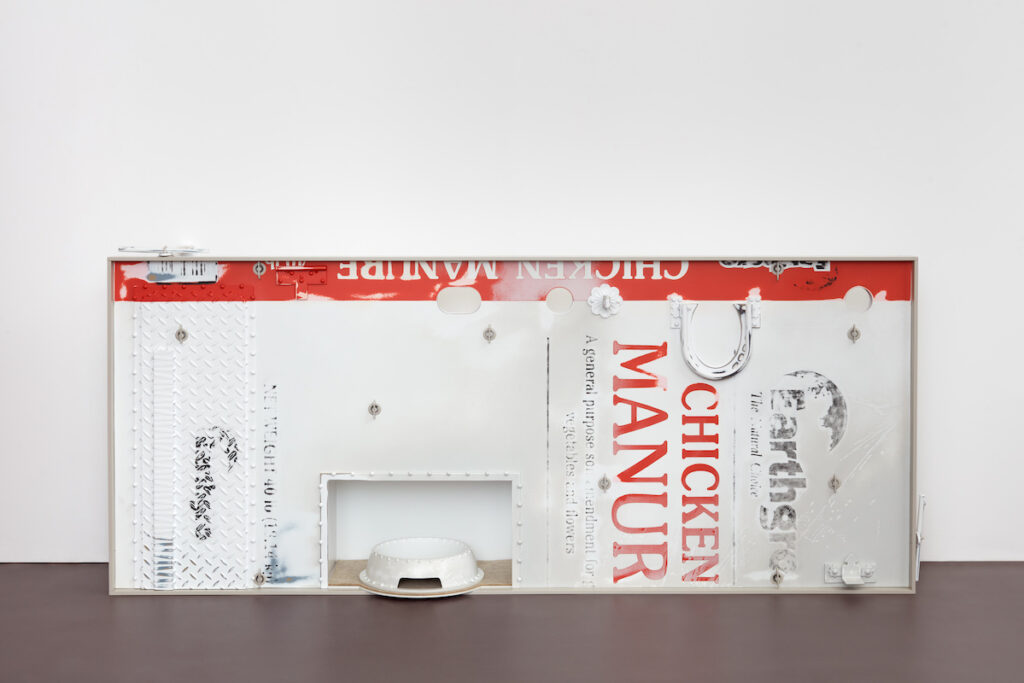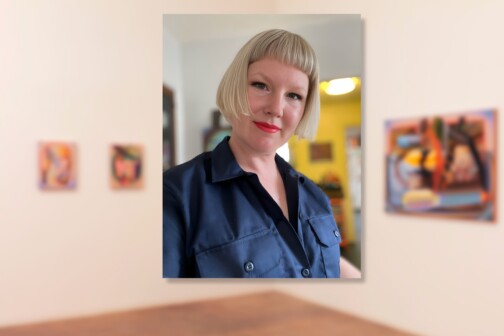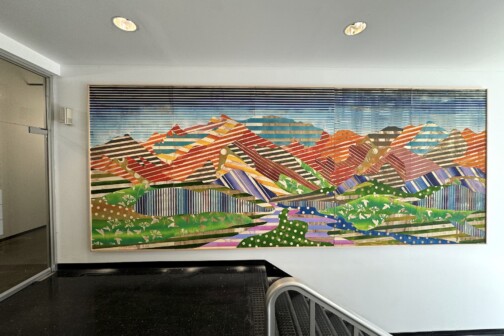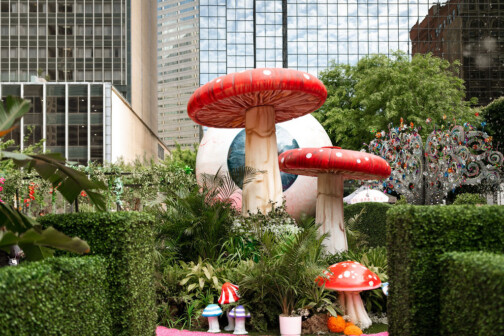When Magali Reus came to the Nasher Sculpture Center for a site visit in 2017, the Dutch artist first noticed the exit signs. Designed specifically for the Renzo Piano building in the signature Nasher green, she was struck by the color, but also the way language and design can work in tandem. As part of her exhibit, “A Sentence in Soil,” on view through September 11, she riffs on those signs, abstracting them beyond the point of recognition.
“I’m interested in the logic of objects,” Reus says. “And I’m thinking about architecture and the way doors and buildings are interested in directing people and bodies in or spewing them out.”
Much of the 41-year-old artist’s work explores this tension between an object’s intended purpose and how that can work with, or against, the context in which it is placed. What usefulness does a weather vane have when it’s placed atop an umbrella stand? What if that umbrella stand doubles as a fruit bowl? Will a viewer even recognize the individual purposes of those objects? Do they become something entirely new? In this exhibit, she’s particularly interested in the ways in which humans can, and do, intervene with the natural world.
“I’m interested in the idea that our relationship to nature has to be filtered,” Reus says. “Like we build walls and then put up windows to let in what we call ‘natural light.’ There are these weird contradictions that exist in our environments.”
Reus explores those contradictions in her work by creating sculptures she describes as “unreal things.” This exhibit contains several complementary works. The exit signs inspired her “Beetles” series, in which she creates a visual puzzle that invites viewers to stand still and unravel it, instead of directing them out of the room. She has created steel contraptions in the specific shade of green and in each iteration she creates a calligraphy out of the electrical cord to deconstruct the four letters E-X-I-T.
“Clays” are most prominent in her exhibit, a series of wall-mounted panels in the shape of a door that have been sized to the height of a body. They’ve been painted to resemble bags of soil and soil additives, like chicken manure. In this way, she creates a mismatch of earth-bound language and industrial materials, like steel, iron, and aluminum. Much of her work is oblique, allowing each person who interacts with it to draw different conclusions. Perhaps she is turning our attention to the issues in factory farming. Maybe she just made something really cool.
Her “Bonelight” series suggest picnic tables, but lack functionality. The rounded edges and curled metal legs have an uncanny quality. Each table has small paintings of a different fruit and a wood carving containing the names of that fruit’s varietal. On the table with a painting of an apple, the carving reads “Braeburn, Autumn Glory, Jonagold, Enterprise, Golden Russet.” Reus, in her way, is pointing toward the need for humans to categorize aspects of nature.
“My work is in many ways about our relationship to nature, which I think for many of us became more explicit during the pandemic,” Reus says.
This exhibit was originally scheduled for April 2020. The work was just days away from being shipped when museums across the world shut down. That delay allowed time for Reus to create a new body of work, “Knaves,” a selection of which is on display at the Nasher. Like many people, Reus stayed with family during the early days of the pandemic. During walks through the woodlands near The Hague in the Netherlands, she discovered a collection of colorful mushrooms and began photographing them.
“I spent more time in nature because I was cooped up in this domestic environment,” Reus says. “I’ve played with photography a lot, but I’ve never felt brave enough to show any of it. I think it’s found its natural place in my body of work.”
She mounted the mushroom photos on powder-coated steel frames that resemble the larger “Clays” series. In some ways, these works complete the life cycle on view in the exhibit: The compost, the soil, the fruit, the consumption, the digestion, the decomposition, which in turn become soil and compost.
“There is a weird circulatory experience to the way we consume,” Reus says, “how we grow our food, consume food and digest food is all connected.”
Author







